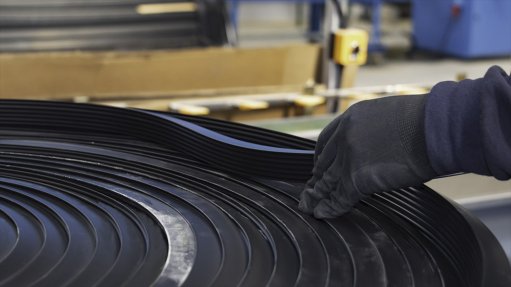
RUBBING OFF THE RIGHT WAY The rubber sector will survive the current unfavourable economic climate as the product remains resilient and relevant in the industrial markets
Engineered rubber remains a requirement for many industries notwithstanding local manufacturing industry woes, says rubber products manufacturer Hudson Rubber MD Stoney Steenkamp.
“The current unfavourable economic climate may be affecting many sectors, but I believe that the rubber sector, specifically, will survive as the product remains resilient and relevant in the industrial markets,” he adds.
The company mainly supplies the logistics, mining, retail and construction, as well as marine and offshore industries. With products ranging from extrusion, sheeting and gaskets to ring and collars, as well as mouldings, Steenkamp enthuses that there are also prospects of supplying to the local automotive market.
“Diversification, value-add services and forward integration are possible areas of growth for us going forward amid all the challenges,” he tells Engineering News.
However, he mentions that there are downturns that affect rubber manufacturing negatively, such as the lack of spending by State-owned enterprises, as a result of leadership challenges. Steenkamp also highlights the “very slow economic growth”, as a result of job losses.
“Other factors include the current state of the construction industry and the continuous opportunities that plastic presents as a replacement for rubber. “The lack of skills development, as well as cheap imports from China which are lower in quality according to local requirements, are also concerning,” he underscores.
Meanwhile, as a means of mitigating these challenges, Steenkamp suggests that government should assist small, medium-sized and microenterprises with access to funding to prompt their growth.
Additionally, with manufacturing being a priority area for the State, government should ensure the strategic plan to reinvigorate the industry is executed to have success for local manufacturing.
“The plan should enable South Africa to reach growth rates of about 3% to 4% a year at minimum. A harsh stand on corruption should be taken to indicate the practice of good leadership, with a clear objective for economic growth,” he adds.
Moreover, while the rubber industry’s strategies – adding value for customers, seeking export opportunities and diversification – remain the same in relation to managed costs, Steenkamp predicts that the industry will be ready to adapt when required to continuously improve at all levels.